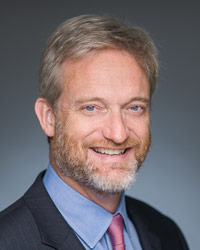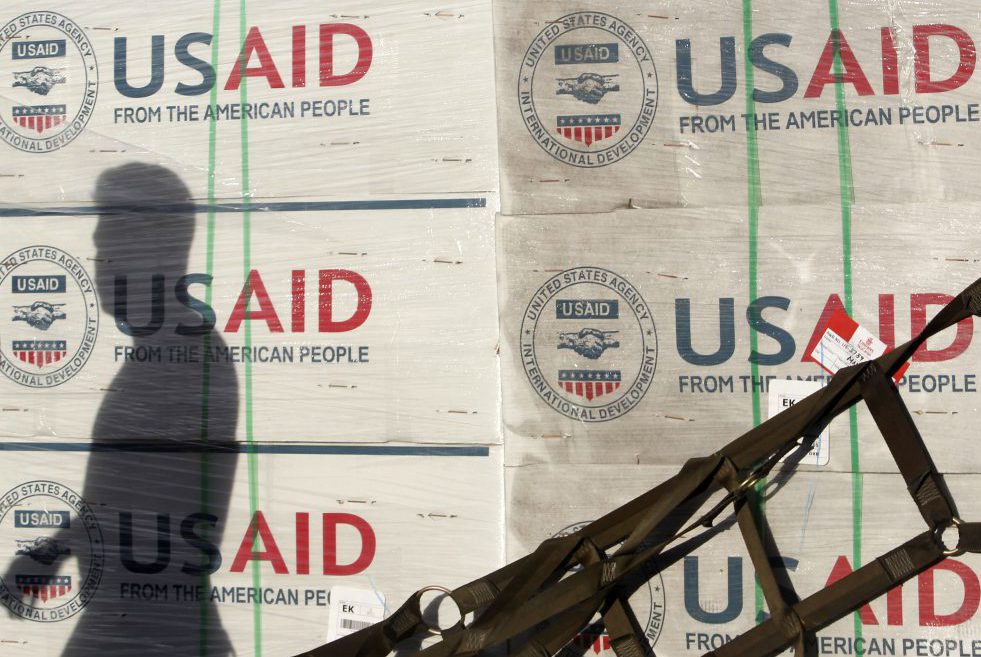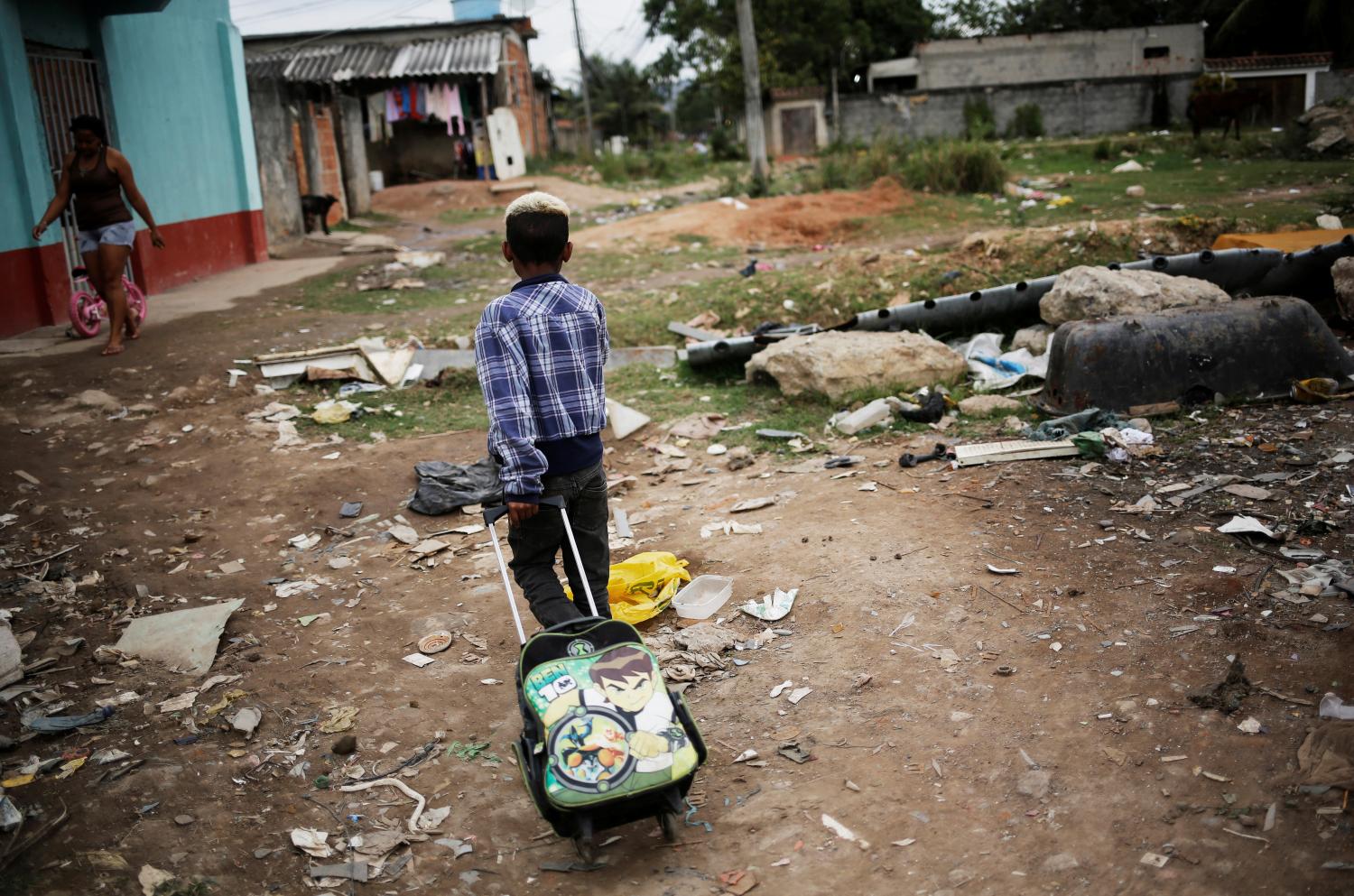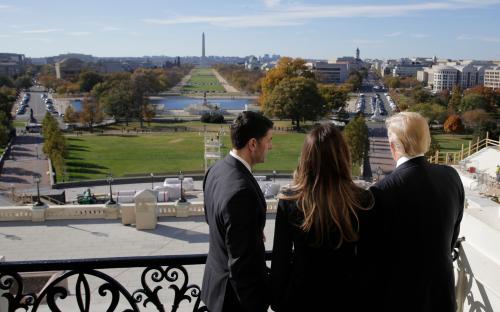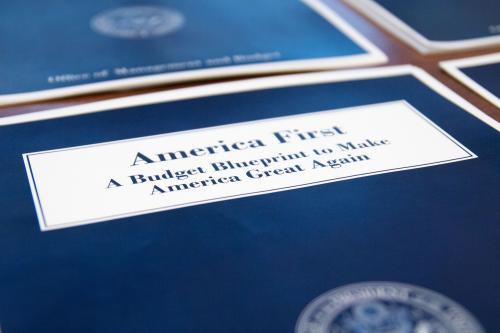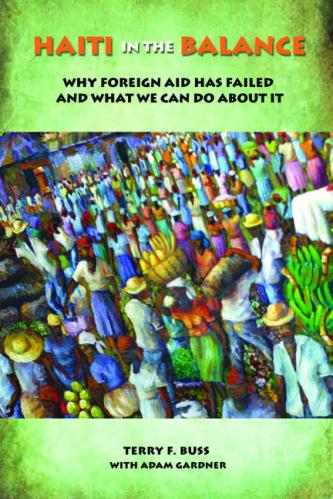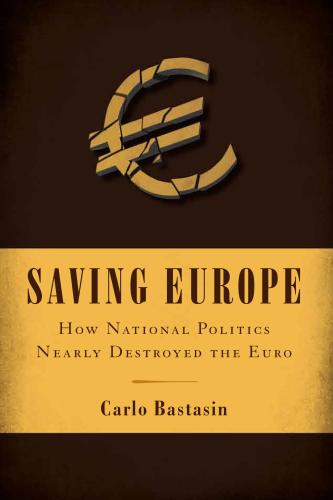The following is one of eight briefs commissioned for the 16th annual Brookings Blum Roundtable, “2020 and beyond: Maintaining the bipartisan narrative on US global development.”
Twenty years ago, Walter Russell Mead described a political tradition in the United States known as “Jacksonianism.”1 This tradition describes an American foreign policy that is a combination of populism, isolationism, big defense budgets, religious faith, skepticism of international agreements, and the belief in a preeminent American destiny.
The current administration may be the most Jacksonian since President Andrew Jackson himself. It is no accident that President Trump hung a painting of the seventh president near his desk in the Oval Office.
Jacksonians are skeptical of “do-gooding” and thus, foreign aid. This is the base logic of the administration’s recent budget requests, which have called for cuts in the International Affairs budget of nearly one-third.
The Congress strongly rejected these proposed cuts, with even Senate Majority Leader Mitch McConnell expressing skepticism.2 This bulwark of support is due to successful and longstanding efforts to build bipartisan congressional support for a robust foreign assistance program based on business interests, national security, and humanitarian concerns.
Even with the Jacksonian in the White House, there have been modest advances in America’s approach to international development. The BUILD Act, which was strongly supported by the administration and both parties in Congress, will transform the Overseas Private Investment Corporation into a much larger and more agile, yet still development-focused agency that can better meet the unique challenges of the early 21st century.
Fears in 2017 that the Trump administration would subsume USAID into the State Department or otherwise successfully denigrate foreign assistance agencies were ultimately unfounded. Members of Congress in both parties urged continued independence for USAID and, somewhat surprisingly, Trump appointees at USAID developed an employee-led transformation effort to modernize the agency.
Where does this mixed record leave us for 2020?
If reelected, President Trump will no doubt continue to emphasize border security over assistance to refugee and immigrant populations and continue the highly skeptical approach to climate change. A victory by a Democrat in 2020 will likely mean an end to the border wall, an increase in aid to affected groups near the border, and a return to robust programs to advance climate action.
Beyond that, several large trends merit close attention among those working on foreign assistance.
Flexibility at risk
Effective execution of American foreign assistance requires that the administration be given enough flexibility to push resources where they are needed and can be most effective in a quick, seamless fashion to achieve results and advance American interests and values.
President Trump, however, has taken the broad flexibility given to the chief executive on several fronts to new extremes. Three sets of actions are of particular concern:
- The drastically increased use of tariffs to address non-trade issues. While popular in the short term with both Republicans and Democrats, these actions are provoking bipartisan concerns, particularly in the Senate, about the inappropriate use of the tariffs.
- The end run by the administration around congressional approval processes for international arms sales provoked concerns (mainly from Democrats), but certain Republicans are pushing back to defend their role in national security decisionmaking.
- The president’s emergency declaration to redirect funding to the border wall will only inspire appropriators to further limit the flexibility of the executive branch on all spending matters, including foreign assistance.
In the International Affairs budget, the executive branch’s reach is already limited by congressional earmarks and directives. The three actions listed above could exacerbate existing concerns regarding implementation of U.S. soft power tools. Indeed, many in Congress have begun calling for reforms that would further limit the president’s flexibility to execute foreign policy. This may produce unintended consequences that could undermine efforts by the U.S. government and civil society organizations to promote democracy, prosperity, and good policy outcomes in health and education.
Nearly all Democratic candidates for president are highly critical of President Trump and are calling for the restoration of support for allies and a renewed broad international engagement, while at the same time trying to keep a focus on domestic issues.
As an example, presidential candidate Elizabeth Warren positions herself on foreign policy in a way that appeals to lower- and middle-class voters: “From endless wars that strain military families to trade policies that crush our middle class, Washington’s foreign policy today serves the wealthy and well-connected at the expense of everyone else.”3
Of all the Democrats, former Vice President Joe Biden makes the most robust appeal for engagement: “The next president must repair our relationships with our allies and stand up to strongmen and thugs on the global stage to rally the world to meet these challenges. We can reclaim our longstanding position as the moral and economic leader of the world.”4
Policy drivers
China
The rise of China and its challenge to the Western-led, liberal world order is the most significant global development that could impact Washington’s decisions on foreign assistance. The BUILD Act gained much of its support because it was framed as a response to China’s Belt and Road Initiative. USAID’s “Clear Choice” framework describes collaboration in the energy, digital, and infrastructure sectors.5 The framework emphasizes programs that are directly responsive to host country needs and policy choices, providing a contrast to China’s authoritarian model that produces strategic debt and dependence.
This positive but realistic approach to the China challenge is still nascent at USAID and not even that far along at the State Department and other critical national security agencies. It has yet to have an impact on either presidential budget requests or congressional appropriations. With both parties in Congress growing increasingly skeptical of China’s policies and plans, “Clear Choice” or an analogous approach will likely emerge as a substantive, bipartisan legislative initiative regardless of who wins the Executive Branch in 2020.
Global prosperity
There is a terrific success story emerging around the globe. The percentage of people living in extreme poverty (less than $1.90 per day) sunk below 10 percent in 2015 for the first time in history6 (although the rate of poverty’s decline is slowing).7 HIV/AIDS is no longer the leading cause of death in Africa. New malaria cases—and malaria mortality rates—are falling dramatically. Over half of the world population has internet access. More than 2.5 billion additional people have access to clean drinking water.8 According to a Brookings Institution paper, the amount of official foreign assistance now exceeds the cost of closing the extreme poverty gap.9
While steady levels of development assistance offer hope that we can end extreme poverty within this generation, we cannot assume that better tailoring the use of such funds to target the poorest of the poor offers a panacea. Today’s focus on micro-targeting also has a downside, since it can be treated as license to further direct aid toward narrow economic or national security interests.
Fragility
When it comes to fragility, prevention is far cheaper than an ex-post cure. The persistence of certain fragile states, mostly in Africa and the Near East, and the consequent instability, poverty, and violence—even leading to international terrorism—cries out for a global solution. Sensible, pragmatic, and well-funded programs are required that can prevent instability and extremism. Such efforts must be coordinated across the U.S. government and with other donors. The last Congress mandated a study,10 carried out by the U.S. Institute of Peace under the leadership of Lee Hamilton and Tom Kean (who also authored the seminal report on the 9/11 attacks that led to significant changes in American government structures). The current Congress is considering legislation consistent with the Hamilton-Kean report that would require a U.S. government-wide strategy on prevention and an international platform for donors to pool resources and coordinate approaches to fragile states.
Critical to this effort is the ability of the United States and other donor countries to collaborate with host governments and civil society groups and identify local needs and address them efficiently and with sensitivity to local political exigencies. This leads directly back to the first driver—the rise of China—and that country’s Belt and Road Initiative, which prioritizes Beijing’s needs over local concerns. This tremendous difference in approach is a potential source of strategic advantage to the West that will require great stewardship.
The way forward
Can the foreign assistance community—particularly in Washington—use the opportunities presented by these challenges to articulate a more effective approach to international aid and the assertion of soft power? Nimbleness and a bit of opportunism, from both administration critics and supporters of international engagement within the administration, will be helpful. The more that partisan rock-throwing and name-calling can be avoided on foreign aid issues, the more likely it is that new initiatives, analogous to the BUILD Act, can be pursued and implemented.
Bipartisan concern about the rise of China may constitute the biggest opportunity. The policy discussion about the institutions and policies that will be required for the U.S. to counterbalance China’s ascent is evolving rapidly, and much can be done now and in the near future to push key stakeholders working on U.S. international development in a constructive and pragmatic direction.
Can the State Department (and the Defense Department) develop a coherent approach—as USAID has done—to the rise of China that effectively utilizes foreign assistance tools in a way that supports national security goals without over-instrumentalizing aid? Can programs such as international exchanges and broadcasting be revitalized and repurposed? Can the United States more effectively collaborate with other liberal democracies to meet the challenge? What old bureaucratic structures should be eliminated or streamlined to make way for new organizations and programs? Which congressional leaders and administration officials will emerge to provide answers to these and other questions?
The opportunities presented by the globe’s new prosperity may be more difficult to exploit due to political realities. Can the United States move further away from tied aid, especially food aid? Can U.S. bilateral and multilateral programs move away from providing commodities in health programs, from family planning to HIV/AIDS, and let local governments take more responsibility?
The challenges presented by fragile states may never be fully eradicated, but with the Hamilton-Kean report, there is an opportunity to address them more directly and successfully. How effectively can aid officials work with Department of Defense colleagues on lessons learned and practical ways forward? Will the United States take a holistic view of its international law and justice programs and develop more coherent and effective policies and structures?
The Chinese military officer and philosopher Sun Tzu wrote that “In the midst of chaos, there is also opportunity.” Today, there is an abundance of opportunity.
-
Footnotes
- Mead, Walter Russell. “The Jacksonian Tradition.” National Interest, Winter 1999, p. 5.
- Zengerle, Patricia. “Trump plan to slash State, foreign aid spending has foes in Congress.” Reuters. February 28, 2017. www.reuters.com/article/us-usa-trump-congress-idUSKBN1672GI.
- www.elizabethwarren.com, accessed June 5, 2019.
- www.joebiden.com/joes-vision/, accessed June 7, 2019.
- www.usaid.gov/news-information/press-releases/nov-26-2018-administrator-mark-green-interview-cspan-newsmakers, accessed June 12, 2019
- Lakner, Christoph et al. “Global poverty in 2015: PovcalNet’s new estimates and improved documentation.” World Bank, September 24, 2018. http://blogs.worldbank.org/opendata/global-poverty-2015-povcalnet-s-new-estimates-and-improved-documentation.
- Kharas, Homi et al. “Global poverty reduction has slowed down–again.” Brookings, May 23, 2019. brookings-edu-2023.go-vip.net/blog/future-development/2019/05/23/global-poverty-reduction-has-slowed-down-again/
- “Good News in the War on Poverty.” The Borgen Project. March 2019. www.borgenproject.org/victories-fighting-poverty/
- Chandy, Laurence et al. “The global poverty gap is falling. Billionaires could help close it.” Brookings, January 20, 2016. brookings-edu-2023.go-vip.net/blog/up-front/2016/01/20/the-global-poverty-gap-is-falling-billionaires-could-help-close-it/
- Task Force on Extremism in Fragile States. Preventing Extremism in Fragile States: A New Approach. United States Institute of Peace. February 26, 2019. www.usip.org/publications/2019/02/preventing-extremism-fragile-states-new-approach.
The Brookings Institution is committed to quality, independence, and impact.
We are supported by a diverse array of funders. In line with our values and policies, each Brookings publication represents the sole views of its author(s).
